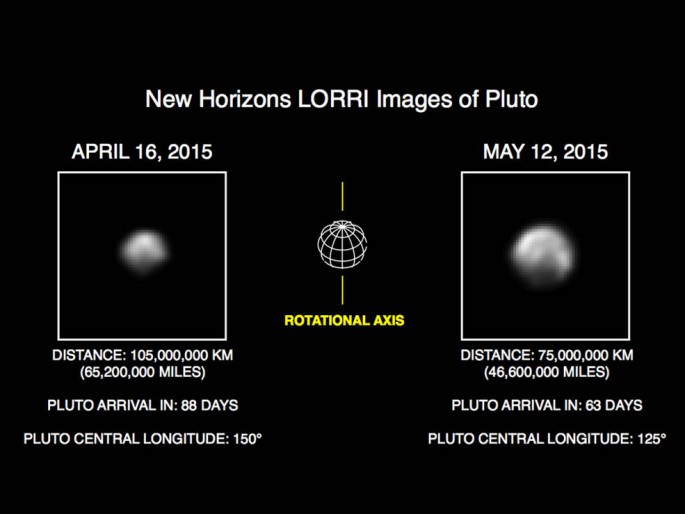NASA's New Horizons spacecraft is zooming closer towards Pluto, flying at a whopping 750,000 miles everyday where highly detailed images are now being transmitted back to Earth that reveals never before seen features of the dwarf planet.
In this latest batch if images that are sent back to Earth from the probe's Long-Range Reconnaissance Imager (LORRI) instrument, a unique and complex world is beginning to unravel itself where vast, darker regions are slowly becoming focused. This set of images which are pixelated views are actually the highest resolution photos yet of Pluto.
According to NASA's Director of Planetary Science, Jim Green, as New Horizons closes in on Pluto, this is now transforming the planet into a high point of intense scientific interest which will soon be confirmed in the next several weeks upon rendezvous.
These new images reveal that Pluto's different faces are distinct from each other which suggests a complex geological process found on the surface where composition may vary from each different region says New Horizons Principal Investigator Alan Stern from the Southwest Research Institute in Colorado.
He also adds that these images also support the claim that Pluto indeed possesses a polar ice cap where the team will be able to obtain from the polar region's ice extent upon the compositional spectroscopy that will be carried out on that region in July.
New Horizons will make its closest encounter yet of Pluto in the next two months where these images will slowly reveal sharper ones, revealing the dwarf planet as a rich and complex world.
According to Hal Weaver who is a New Horizons project scientist from the Johns Hopkins University Applied Physics Laboratory, during late next month, the images will now transform and become better by four times its current view compared to the last series of images from May 8 to 12.
During the closest approach in several weeks time, the images will become optimized by 5,000 times than its current resolution, revealing the alien world for the first time.



























